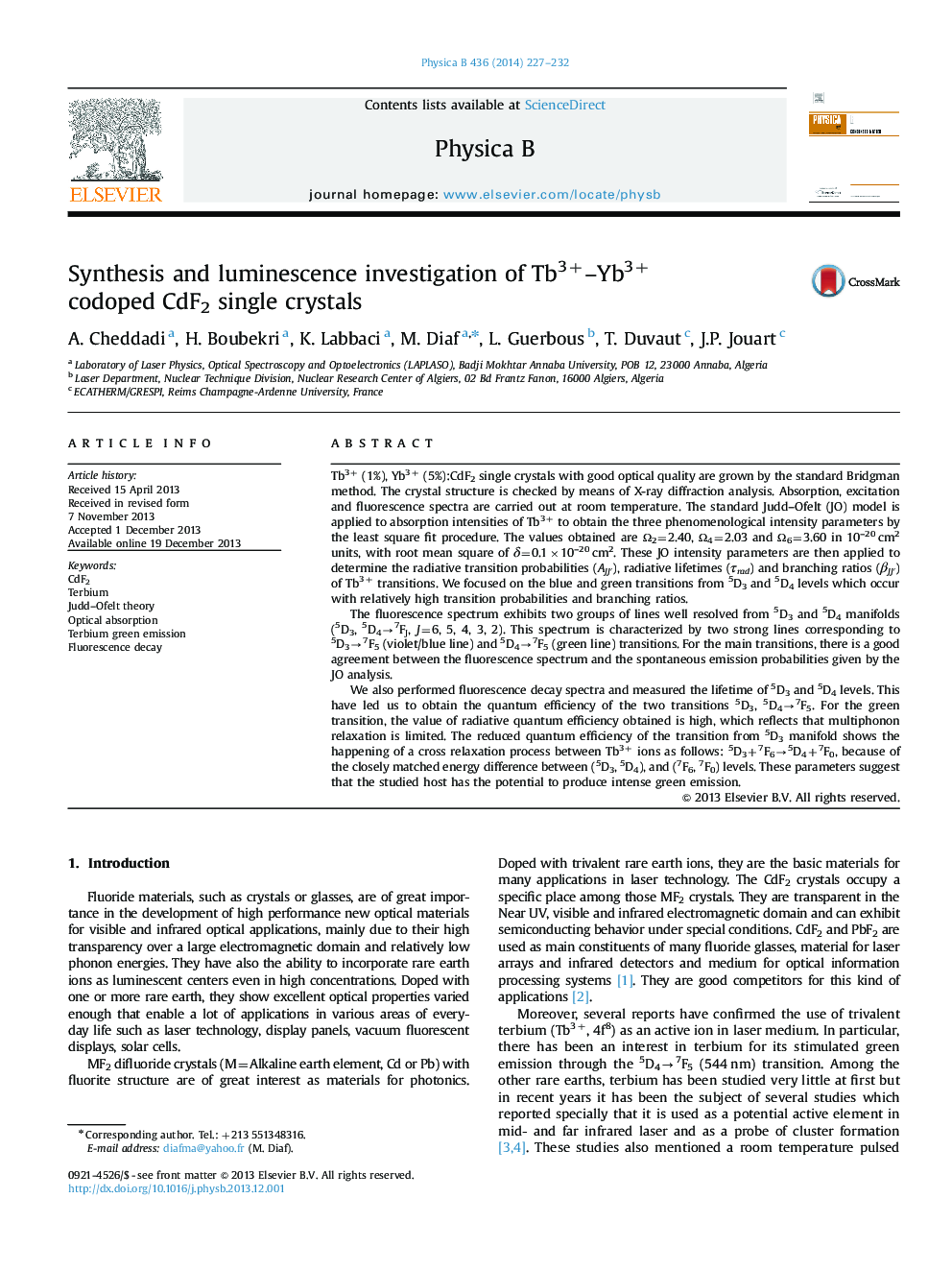| Article ID | Journal | Published Year | Pages | File Type |
|---|---|---|---|---|
| 1809864 | Physica B: Condensed Matter | 2014 | 6 Pages |
Tb3+ (1%), Yb3+ (5%):CdF2 single crystals with good optical quality are grown by the standard Bridgman method. The crystal structure is checked by means of X-ray diffraction analysis. Absorption, excitation and fluorescence spectra are carried out at room temperature. The standard Judd–Ofelt (JO) model is applied to absorption intensities of Tb3+ to obtain the three phenomenological intensity parameters by the least square fit procedure. The values obtained are Ω2=2.40, Ω4=2.03 and Ω6=3.60 in 10–20 cm2 units, with root mean square of δ=0.1×10–20 cm2. These JO intensity parameters are then applied to determine the radiative transition probabilities (AJJ'), radiative lifetimes (τrad) and branching ratios (βJJ') of Tb3+ transitions. We focused on the blue and green transitions from 5D3 and 5D4 levels which occur with relatively high transition probabilities and branching ratios.The fluorescence spectrum exhibits two groups of lines well resolved from 5D3 and 5D4 manifolds (5D3, 5D4→7FJ, J=6, 5, 4, 3, 2). This spectrum is characterized by two strong lines corresponding to 5D3→7F5 (violet/blue line) and 5D4→7F5 (green line) transitions. For the main transitions, there is a good agreement between the fluorescence spectrum and the spontaneous emission probabilities given by the JO analysis.We also performed fluorescence decay spectra and measured the lifetime of 5D3 and 5D4 levels. This have led us to obtain the quantum efficiency of the two transitions 5D3, 5D4→7F5. For the green transition, the value of radiative quantum efficiency obtained is high, which reflects that multiphonon relaxation is limited. The reduced quantum efficiency of the transition from 5D3 manifold shows the happening of a cross relaxation process between Tb3+ ions as follows: 5D3+7F6→5D4+7F0, because of the closely matched energy difference between (5D3, 5D4), and (7F6, 7F0) levels. These parameters suggest that the studied host has the potential to produce intense green emission.
